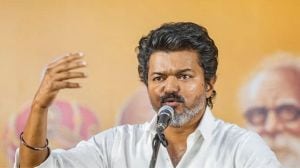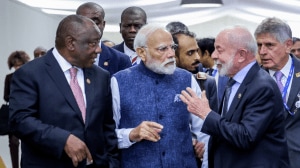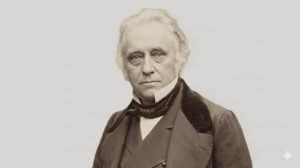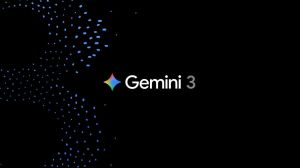The 14th Dalai Lama, the spiritual leader of Tibetan Buddhism, said on Monday (June 30) that the continuation of the institution of the Dalai Lamas will happen under “some kind of a framework”.
The statement assumes significance because in 2011, the leader stated he would consult the Tibetan High Lamas and the Tibetan people to re-evaluate whether the institution should continue when he turns 90. His 90th birthday is on Sunday, July 6.

From July 2 to July 4, a Buddhist religious conference will be held in McLeodganj, Dharamshala. There is also anticipation around a video statement from the Dalai Lama, which could mention the process for selecting the next reincarnation of the holy leader.
The selection of the next Dalai Lama matters not just for Tibetan Buddhists but also for China, India, and the United States. Following an uprising against Chinese control of Tibet, the Dalai Lama fled to India in 1959 with 80,000 of his followers and established a government-in-exile. The Chinese government has since described him as a “wolf in monk’s clothes” and sought to extend its control over Tibetan Buddhism. Here is what to know.
Who is the Dalai Lama?
The current Dalai Lama, Tenzin Gyatso, was born in 1935 to a farming family in a small hamlet in Taktser, Amdo, in northeastern Tibet. He was recognised as the reincarnation of the 13th Dalai Lama when he was two years old.
According to the website of the Central Tibetan Administration (CTA), established in India following the exodus from Tibet, the Dalai Lamas are believed to be manifestations of Avalokiteshvara or Chenrezig, “the Bodhisattva of Compassion and patron saint of Tibet”.
In Buddhism, Bodhisattvas are considered enlightened figures, even worshipped, but they are perceived differently by the various branches of the faith.
Story continues below this ad
For example, Mahayana Buddhism, which is considered a less orthodox branch, prioritises taking everyone along on the path to true knowledge and salvation. Bodhisattvas are to live among the people, and help them alleviate their suffering and ultimately achieve an enlightened state, even if they must delay their own enlightenment for it. Tibetan Buddhism also contains influences from Mahayana Buddhism.
The First Dalai Lama (the title means “Ocean of Wisdom”), Gedun Drupa, was born in 1391 in the Tsang region of central Tibet. The Second Dalai Lama, Gedun Gyatso, was born in 1475, and was recognised as a reincarnation of the first Dalai Lama at the age of 11. By the 17th century, the position was also bestowed with political powers.
In the past, the reincarnation process has involved, among other things, the new leader identifying some of the old leader’s belongings as proof of remembering his past life. The current Dalai Lama once said, “reincarnation is a phenomenon which should take place either through the voluntary choice of the concerned person or at least on the strength of his or her karma, merit, and prayers”.
Why is the Dalai Lama’s succession significant?
In 2019, the present Dalai Lama told Time Magazine, “On one occasion the Dalai Lama institution started. That means there must be one occasion when the institution is no longer relevant. Stop. No problem. This is not my concern. China’s communists, I think, are showing more concern.”
Story continues below this ad
The suggestion of a possible abolishment had to do with concerns about China influencing the process, and choosing its own, pro-Beijing Dalai Lama. A similar story played out in the selection of the Panchen Lama, the senior-most spiritual leader in Tibetan Buddhism after the Dalai Lama.
The Chinese government announced Gyaltsen Norbu as the Panchen Lama in 1995, after the Dalai Lama chose Gedhun Choekyi Nyima as the Panchen Lama. The then six-year-old boy soon went missing, and there were allegations that the Chinese government had played a role in his abduction. Chinese authorities have denied these allegations and occasionally provided sparse updates on Nyima. However, he has not been seen publicly in the past three decades.
Chinese President Xi Jinping met Norbu, 35, in Beijing last month and spoke about him playing “a greater role in forging a strong sense of community for the Chinese nation, systematically promoting the principle that religions in China must be Chinese in orientation”.
Over the years, China has projected claims about the continuing historical unity of past Chinese kingdoms with Tibet, even as critics and Tibetan activists have challenged those arguments. Tibet matters to China for several reasons, including its strategic location and its rivers and natural resources.
Story continues below this ad
Human rights groups have said that millions of Han Chinese — the largest ethnic community in China — have been settled in Tibet, with a clampdown on indigenous Tibetan culture. This is among the several practices dubbed as “Sinicisation”, or the state’s push to align minority groups and cultures within China with that of the majority.
What could happen next?
In 2011, the Dalai Lama had said that if the institution of the Dalai Lama were to continue, there would be “an obvious risk of vested political interests misusing the reincarnation system to fulfill their own political agenda”. The same year, he renounced his political duties, tasking the CTA with them.
He said that he would draw up clear guidelines to recognise the next Dalai Lama, “so that there is no room for doubt or deception”. This is why the coming week holds significance.
Since the late 1980s, the Dalai Lama’s aims have shifted from independence for Tibet to greater autonomy for Tibet within China.
Story continues below this ad
In his book Voice for the Voiceless, published this year, he wrote, “I, for one, do not believe it would be so difficult for the Chinese government to make the Tibetans feel welcome and happy within the family of the People’s Republic of China. Like all people, Tibetans would like to be respected, have agency within their own home, and have the freedom to be who they are. The aspirations and the needs of the Tibetan people cannot be met simply through economic development.”
He added that it was “totally inappropriate for Chinese Communists, who explicitly reject religion, including the idea of past and future lives, to meddle in the system of reincarnation of lamas, let alone that of the Dalai Lama”. He added that the next Dalai Lama would be born in the “free world”, meaning outside Tibet.
The leadership transition will also be important for India, the home of the Central Tibetan Administration, and the United States, which has positioned Tibet as a key issue in its relations with China.
Last year, US lawmakers passed the Tibet Dispute Act, with then President Joe Biden stating, “My Administration will continue to call on the People’s Republic of China to resume direct dialogue, without preconditions, with the Dalai Lama, or his representatives, to seek a settlement that resolves differences and leads to a negotiated agreement on Tibet.”








































